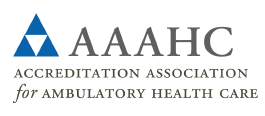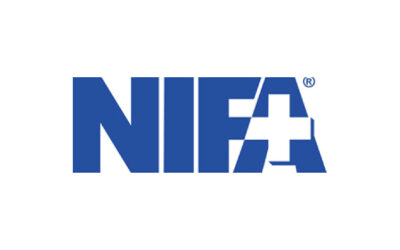New report outlines top deficiencies, provides guidance for ambulatory care settings
 (Skokie, Ill.) November 19, 2020 – More than 50 million Americans suffer from allergies each year[i], a staggering number that reflects both mild and many severe allergies that, if not properly documented and addressed by health care professionals, can lead to potentially devastating consequences. To help minimize such occurrences, the Accreditation Association for Ambulatory Health Care Institute for Quality Improvement (AAAHC Institute) has published a new Allergy Benchmarking study, which underscores the crucial task of correctly documenting patients’ allergies (e.g., drugs, food, insect, latex, mold, pet, and pollen) in order to minimize risks of adverse reactions.
(Skokie, Ill.) November 19, 2020 – More than 50 million Americans suffer from allergies each year[i], a staggering number that reflects both mild and many severe allergies that, if not properly documented and addressed by health care professionals, can lead to potentially devastating consequences. To help minimize such occurrences, the Accreditation Association for Ambulatory Health Care Institute for Quality Improvement (AAAHC Institute) has published a new Allergy Benchmarking study, which underscores the crucial task of correctly documenting patients’ allergies (e.g., drugs, food, insect, latex, mold, pet, and pollen) in order to minimize risks of adverse reactions.
AAAHC Institute analysis of allergy documentation found that processes and procedures related to this issue could be improved within the ambulatory care setting. In addition to asking organizations about their adherence to AAAHC Standards requiring allergies, sensitivities, and reactions to be recorded in a prominent and consistent location in all clinical records, the AAAHC Institute study dug deeper by asking organizations about the best practice of documenting both the reaction or symptom (e.g., hives) and the severity of the reaction (e.g., mild, moderate, severe). According to findings in the 2020 Allergy Documentation study, although 86% of organizations reported having a policy requiring documentation of allergy symptoms/severity, documentation of BOTH the symptom and the severity was present in only 41% of charts in which the patient had at least one allergy. This lapse can lead to inaccurate allergy documentation from one visit to the next, impacting health care decisions, the quality of patient care, and ultimately a patient’s health.
“To have an accurate record of a patient’s allergy history, health care providers should consistently discuss and verify allergies with the patient during each visit and properly record existing or new allergies along with their symptoms and reactions,” said Tess Poland, RN, MSN, senior vice president of accreditation services at AAAHC. “As the COVID-19 pandemic continues, it is especially important to have these conversations with patients. Differentiating allergy versus COVID-19 symptoms can help ensure that the patient receives the correct treatment.”
Study Summary
The AAAHC Institute for Quality Improvement Allergy Benchmarking study analyzed self-reported data from 81 AAAHC-Accredited surgical and primary care organizations, reviewing more than 1,705 patient charts with at least one allergy between January-June 2020. The survey data indicates that common issues in allergy documentation include:
- Allergies have not been verified/updated on each visit.
- Documentation regarding allergies is inconsistently located in clinical records.
- “Allergies” are listed, but reactions are not.
- There is a reliance on “NKDA” (No Known Drug Allergies) without reference to other types of allergies/sensitivities.
- Allergic reaction documentation is inconsistent.
Allergy Documentation Resources
In addition to the benchmarking study, AAAHC published a toolkit on this topic that provides guidance and best practices for effective allergy documentation. To help ambulatory health care organizations improve quality of care when it comes to allergies, the Allergy Documentation Toolkit includes an overview of challenges and improvement strategies, as well as more specific discussions about latex and penicillin/beta-lactam allergies. Complementing the toolkit is a webinar series focusing on medication management which features an hour-long presentation on allergy documentation. To learn more about the webinar series, visit learn.aaahc.org.
“To assess performance against peers and learn best practices within allergy documentation that can make a difference in the care provided to patients, we encourage organizations to utilize the Allergy Toolkit and Benchmarking Study in conjunction with the 2020 AAAHC Quality Roadmap,” added Noel Adachi, MBA, president and CEO of AAAHC. “AAAHC strives to keep our 1095 Strong, quality every day philosophy top of mind when creating educational resources to ensure that organizations have the necessary tools to improve the quality of care provided throughout the 1,095 days of the accreditation term.”
For more information about AAAHC’s allergy documentation resources, please visit https://www.aaahc.org/quality/.
[i] WebMD. Allergy Statistics and Facts. Dec. 2019. https://www.webmd.com/allergies/allergy-statistics. July 2020.








